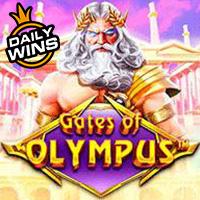




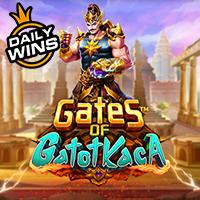
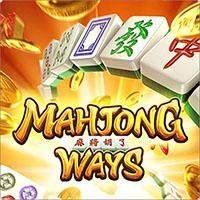

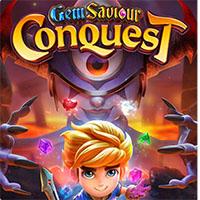

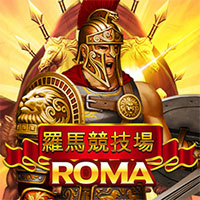

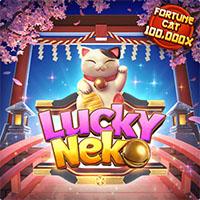

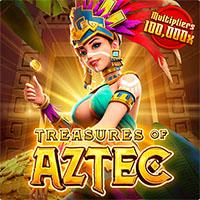



1. Introduction to Mystery Symbols: Origins and Significance
Symbols have been an intrinsic part of human history, serving as visual representations that transcend language barriers. They carry profound cultural importance by encapsulating beliefs, social identities, and shared histories. From ancient cave paintings to modern digital icons, symbols facilitate communication across generations, often embodying complex ideas or spiritual concepts without the need for words.
Throughout history, symbols have played pivotal roles in religion, rituals, and societal cohesion. They help define cultural boundaries and foster collective identity, ensuring traditions are preserved and understood. The evolution of symbolism reflects humanity’s ongoing quest to communicate, record, and interpret the mysteries of existence, moving from sacred emblems to contemporary visual languages.
2. The Historical Roots of Mystery Symbols in Ancient Japan and Beyond
a. Symbols in ancient Japanese culture: religious and spiritual meanings
Ancient Japan offers a rich tapestry of symbolic expression rooted in Shinto and Buddhist traditions. For example, the torii gate symbolizes the threshold between the mundane and the sacred, while the Komainu lion-dog statues serve as spiritual protectors. Many symbols derived from nature, such as the cherry blossom representing transient beauty and mortality, encapsulate spiritual philosophies that continue to influence Japanese culture today.
b. Cross-cultural symbolism: influences from China, India, and other regions
Japanese symbolism was significantly shaped by interactions with neighboring cultures. Chinese characters and motifs, such as dragons and phoenixes, found their way into Japanese art and religious iconography, carrying meanings related to power, immortality, and harmony. Indian influences introduced symbols like the lotus, representing purity and enlightenment, which were integrated into Buddhist practices across Asia.
c. Examples of ancient symbols with enduring mystery and significance
- Yin-Yang: Represents balance and duality, originating from Chinese philosophy but widely adopted in East Asian cultures.
- Om: A sacred sound and symbol in Indian religions, signifying the universe’s primordial vibrations.
- Spirals: Found in ancient petroglyphs worldwide, often linked to concepts of growth, cycles, and spiritual journeys.
3. The Function of Symbols in Ancient Societies
a. Symbols as tools for conveying complex ideas without words
In societies with limited literacy, symbols served as a universal language, transmitting laws, religious doctrines, and social codes. For example, in ancient Egypt, hieroglyphs combined images and sounds to encode stories of gods and kings, enabling communication across diverse groups.
b. Rituals and ceremonies centered around enigmatic symbols
Mystical symbols often played central roles in rituals, acting as conduits for divine power. In Mesoamerican cultures, elaborate glyphs and iconography invoked deities and facilitated communication with the spiritual realm, exemplifying the symbolic complexity used to legitimize authority and ensure cosmic balance.
c. Case study: Gold staters and their symbolic value in Alexander the Great’s era
Ancient coins like gold staters were more than currency; they bore symbols of sovereignty, divine favor, and cultural identity. Alexander’s coins often featured symbols such as the lion or eagle, representing strength and divine authority—an early form of visual storytelling that reinforced political power.
4. Transition from Ancient to Modern: The Evolution of Symbols
a. How symbols transitioned from sacred to commercial/entertainment contexts
Over centuries, many religious or sacred symbols have been repurposed for commercial and entertainment uses. Corporate logos, for instance, often borrow from ancient symbolism to evoke trust, power, or mystery—think of the eagle in various brand emblems or the use of mystical motifs in branding strategies.
b. The impact of technological advances on symbol dissemination
The digital age has exponentially increased the speed and scale at which symbols spread. Social media, digital art, and gaming platforms allow symbolic language to evolve rapidly, creating new icons and memes that shape cultural perceptions worldwide.
c. The rise of visual language in contemporary media
Contemporary media relies heavily on visual symbols— emojis, icons, and graphic motifs—that communicate instantly across languages and cultures. This shift underscores a move from text-based to image-based communication, where symbolism is central to engagement and storytelling.
5. Modern Mystery Symbols in Gaming and Entertainment
a. The role of symbols in slot machines and video games
Symbols are fundamental in gaming, especially in slot machines and video games, where they evoke themes, create suspense, and influence player perception. Familiar motifs—such as ancient runes, mythological icons, or abstract shapes—are used to generate excitement and immerse players into different worlds.
b. Examples of modern symbols: from ancient motifs to contemporary icons
- Ancient motifs: Egyptian scarabs, Norse runes, Chinese dragons.
- Contemporary icons: Power symbols, abstract geometric shapes, stylized characters.
c. Case study: Le Zeus slot features explained
Modern games like Le Zeus exemplify the integration of thematic symbols to evoke mystery and excitement. By incorporating ancient motifs—such as lightning bolts, mythological figures, and symbolic objects—these games tap into the subconscious associations of power, divinity, and adventure, making the experience more immersive and engaging.
6. The Psychological and Cultural Impact of Symbols
a. How symbols influence perception and decision-making
Research indicates that symbols can subconsciously influence choices and attitudes. For example, the color red is associated with urgency and excitement, affecting consumer behavior and gambling decisions. Similarly, mythological symbols in games can evoke feelings of power or mystique, guiding player engagement.
b. Cultural variations in symbol interpretation
Interpretations of symbols vary widely across cultures. The lotus flower signifies purity in Indian traditions but may symbolize rebirth or enlightenment elsewhere. Recognizing these differences is crucial in designing symbols for global audiences, ensuring they evoke intended meanings.
c. The subconscious power of symbols in marketing and game design
Marketers and designers leverage symbolic imagery to subtly influence perceptions, creating emotional connections that drive engagement. For instance, the use of sacred or mystical symbols in slot games enhances perceived value and excitement, demonstrating the power of symbolism in shaping user experience.
7. Decoding Symbols: Techniques and Challenges
a. Methods used to interpret ancient and modern symbols
Interpreting symbols involves cross-disciplinary approaches, including historical analysis, linguistic studies, and semiotics. Researchers often compare artifacts, contextualize symbols within cultural frameworks, and apply cryptographic techniques to decipher encrypted meanings.
b. Challenges in understanding symbols with lost or encrypted meanings
Many ancient symbols are ambiguous due to cultural shifts or incomplete records. Modern encryption and intentional secrecy further obscure meanings, requiring sophisticated analysis and often leading to multiple interpretations.
c. The role of context in deciphering symbolic messages
Context is critical; a symbol’s meaning depends heavily on cultural, historical, and situational factors. For example, a symbol representing fertility in one culture might signify power or divinity elsewhere.
8. The Industry of Symbols: From Historical Artifacts to Digital Media
a. Preservation and study of ancient symbols in museums and academia
Museums and scholarly institutions work tirelessly to preserve ancient artifacts, offering insights into historical symbolism. Techniques like digital imaging and 3D modeling help study symbols in detail, ensuring their meanings are not lost to time.
b. How modern games like Le Zeus incorporate symbolic storytelling
Contemporary slot games integrate symbolic motifs to craft narratives and evoke specific emotions. As seen in Le Zeus, mythological symbols are woven into game design, enriching player immersion and reinforcing thematic mystery.
c. The influence of industry standards on symbol design and usage
Regulatory and branding standards influence how symbols are created and used, balancing artistic expression with clarity and cultural sensitivity. This ensures symbols are effective, appropriate, and resonate with global audiences.
9. Non-Obvious Perspectives: Hidden Meanings and Symbolic Layers
a. Esoteric and secret symbolism in ancient and modern contexts
Many ancient symbols held secret meanings accessible only to initiates. Similarly, modern symbols in games or art may contain hidden layers, coded messages, or esoteric references intended for specific audiences—adding depth and intrigue.
b. Symbols as carriers of coded messages or hidden truths
Ciphers, sigils, and cryptic iconography serve to conceal information, fostering a sense of mystery. For example, secret societies historically used symbolic codes to communicate clandestine messages, a practice echoed in contemporary storytelling and gaming.
c. The role of symbolism in creating immersive experiences
Deeply layered symbolism enhances immersion, inviting audiences to decode hidden meanings and engage actively. This strategy enriches storytelling, whether in ancient rituals or modern digital environments like immersive video games.
10. Conclusion: The Continual Journey of Unlocking Mystery Symbols
Throughout history, mystery symbols have fascinated humankind, serving as bridges between the known and the unknown. From the spiritual motifs of ancient Japan to the thematic icons in contemporary gaming, symbols endure as powerful tools for communication, identity, and storytelling.
“Symbols are the language of the unconscious, revealing truths beyond words and time.” — Cultural Historian
Modern examples like Le Zeus demonstrate how ancient principles of symbolism continue to evolve, enriching entertainment and cultural narratives. As we deepen our understanding of these visual languages, we unlock not only mysteries of the past but also the keys to present and future storytelling.
